Introduction
Scheduling inspections—whether for property walk‑throughs, equipment maintenance, safety audits, or quality control—can quickly become a logistical headache. You need to coordinate inspectors, clients, and resources across multiple locations, while ensuring that appointments aren’t double‑booked and that everyone receives timely reminders. The solution lies in leveraging calendar integrations: tools and platforms that connect your inspection workflows directly to popular calendar systems, automating event creation, updates, reminders, and rescheduling.
In this article, you’ll discover the leading calendar integrations—ranging from general‑purpose schedulers like Google Calendar and Microsoft Outlook to inspection‑specialized SaaS platforms and no‑code automation tools—that simplify inspection scheduling. We’ll explore their features, pros and cons, real‑world use cases, and best practices to help you choose and implement the right solution for your organization.

Why Calendar Integrations Matter for Inspections
Eliminating Double‑Bookings and Gaps
- Real‑Time Availability: Sync your inspectors’ calendars so that once a slot is taken it instantly disappears from the booking interface.
- Buffer Times: Automatically block travel, prep, and report‑writing time around each inspection.
Streamlining Communication
- Automated Invites: Invitations with date, time, location, and checklist links are sent to all participants at once.
- Two‑Way Updates: Changes in the scheduling tool propagate to calendars, and vice versa, preventing silos.
Reducing No‑Shows
- Automated Reminders: SMS, email, or in‑app notifications sent 24 hours and 1 hour before appointments.
- Client‑Facing Booking Links: Empower clients or site managers to confirm or reschedule without back‑and‑forth emails.
Enhancing Reporting & Compliance
- Audit Trails: Calendar events serve as timestamped records of when inspections were scheduled, modified, or canceled.
- Integration with Forms: Attach inspection checklists, safety protocols, or permit requirements directly to the event.
Major Calendar Integrations for Inspection Scheduling
Google Calendar
Overview
Google Calendar is ubiquitous, free (with G Suite) and offers robust API access.
Key Features
- API Event Creation & Modification: Use Google’s REST API to programmatically create, update, and delete events.
- Attendee Management: Add multiple participants with automatic RSVP tracking.
- Reminders & Notifications: Configure email or mobile push reminders at custom intervals.
- Shared Calendars: Group inspectors on a shared “Inspection Team” calendar to manage overall availability.
Use Cases
- Ad‑Hoc Inspections: Quickly block slots for one‑off equipment checks or emergency safety audits.
- Team Dispatch: Assign multiple inspectors to a single event and track who’s accepted.
Pros & Cons
| Pros | Cons |
|---|---|
| Free and widely adopted | No native inspection forms or checklists |
| Cross‑platform sync (web, mobile, desktop) | Limited built‑in automation beyond reminders |
| Powerful API for custom integrations | Requires development for customization |
Microsoft Outlook / Office 365 Calendar
Overview
For enterprises embedded in the Microsoft ecosystem, Outlook Calendar offers deep integration with Exchange and Teams.
Key Features
- Microsoft Graph API: Full CRUD operations on events, calendars, and availability queries.
- Teams Meeting Links: Automatically generate video‑call links for remote or hybrid inspections.
- Power Automate Flows: Automate workflows—e.g., send follow‑up forms after an inspection event.
- Shared Mailboxes & Resource Calendars: Create dedicated “Inspection Rooms” or “Equipment Reservations.”

Use Cases
- Remote Safety Audits: Schedule Teams video inspections, combining in‑person and virtual attendees.
- Facility Management: Reserve shared resources (e.g., inspection vehicles or drones) alongside calendar slots.
Pros & Cons
| Pros | Cons |
|---|---|
| Enterprise‑grade security & compliance | Licensing costs for Power Automate and premium features |
| Native integration with Outlook, Teams, and Exchange | Complexity in setting up flows and connectors |
| Advanced access and permission controls | Less user‑friendly for external clients |
Calendly
Overview
Calendly is a self‑service scheduler that connects to Google, Outlook, Office 365, or iCloud, enabling external stakeholders to book inspection slots directly.
Key Features
- Public Booking Pages: Share a branded link where clients select from available slots.
- Custom Intake Forms: Collect address, inspection type, permit numbers, and special instructions during booking.
- Buffer & Minimum Notice Rules: Enforce travel buffers and block last‑minute bookings.
- Group Events & Round Robin: Assign inspect requests to a team evenly or allow multiple clients to join a single event.
Use Cases
- Customer Bookings: Let property managers or equipment owners self‑schedule routine safety checks.
- Work Order Intake: Pre‑qualify clients by requiring inspection details before confirmation.
Pros & Cons
| Pros | Cons |
|---|---|
| No‑code setup, intuitive interface | Premium tiers required for advanced features |
| Integrates with major calendars instantly | Monthly cost per user |
| Automatic reminders and follow‑ups | Limited if you need deep customization |
Acuity Scheduling
Overview
Acuity (by Squarespace) offers appointment scheduling with integrated payment collection and calendar sync.
Key Features
- Online Payments & Deposits: Collect inspection fees or deposits at booking time.
- Branded Client Portal: Clients can view, reschedule, or cancel inspections themselves.
- Custom Confirmation & Reminder Emails: Embed checklists or safety protocols in communications.
- Multiple Calendar Connections: Sync one Acuity account to multiple staff calendars.
Use Cases
- Fee‑Based Inspections: Drone roof surveys, environmental impact assessments, or specialty equipment inspections requiring prepayment.
- Subscription Services: Recurring maintenance inspections billed automatically.

Pros & Cons
| Pros | Cons |
|---|---|
| Built‑in payments and client portal | More expensive than simpler schedulers |
| Highly customizable intake forms | Learning curve for advanced features |
| Automated reminders with rich templates | May be overkill for free inspections |
Doodle
Overview
Doodle uses poll‑style scheduling to find the best time for a group, then syncs the final choice to individual calendars.
Key Features
- Availability Polls: Stakeholders vote on proposed time slots.
- Automatic Event Creation: Converts the chosen slot into calendar events for all participants.
- Slack & Teams Integration: Run polls and share results directly within collaboration tools.
- iCal Export: For users on platforms without native connector support.
Use Cases
- Multi‑Party Coordination: Landlords, tenants, inspectors, and contractors coordinate availability.
- Complex Audit Scheduling: Gathering multiple subject‑matter experts for compliance inspections.
Pros & Cons
| Pros | Cons |
|---|---|
| Eliminates endless email back‑and‑forth | Not ideal for customer‑facing booking |
| Integrates with collaboration platforms | Poll recipients cannot self‑book |
| Simple to set up and share | Lacks intake form capabilities |
Inspection‑Specific Platforms with Native Calendar Sync
Many inspection SaaS solutions include built‑in scheduling and then push events to your calendar:
| Platform | Core Features | Calendar Sync |
|---|---|---|
| iAuditor | Customizable checklists, offline mode, analytics | Google Calendar & Outlook via Zapier |
| SafetyCulture | Photo‑based audits, corrective actions | iCal feeds; two‑way via API |
| GoCanvas | Mobile forms, PDF reports, GPS stamping | Native Google & Outlook connectors |
| ServiceTitan | Dispatching, GPS tracking, invoicing | Two‑way sync with Outlook & Google |
| UpKeep | Work orders, asset management, parts tracking | Google Calendar & Office 365 |
These platforms bundle inspection content, workflows, and compliance reporting—then integrate seamlessly with your preferred calendar system.
Zapier & Make (Integromat): The “Glue” for Custom Workflows
If your inspection tool lacks native calendar integration, lean on no‑code automation:
- Trigger: A new inspection record is created in your database or inspection app.
- Action: Create or update an event in Google Calendar, Outlook, or any supported calendar.
- Follow‑Up: Send reminders via SMS (Twilio) or email (SendGrid).
- Post‑Inspection: Log completion details back into your CRM or ERP.

With Zapier or Make, you can connect hundreds of apps, adding forms, spreadsheets, or messaging platforms into your inspection scheduling ecosystem.
Best Practices for Inspection Scheduling
- Define Clear Time Blocks: Include travel, setup, and buffer times around each inspection.
- Automate Reminders: Send multiple reminders (e.g., 24 hours, 1 hour before) to drive attendance.
- Enable Two‑Way Updates: Ensure that calendar changes—made by inspectors—sync back to your scheduling system.
- Centralize Dispatch: Maintain a master “Dispatch Calendar” so operations managers can view and reassign tasks in real time.
- Time‑Zone Awareness: Display times in the inspector’s local zone, with clear conversion for remote teams.
- Capture Metadata: Attach forms, photos, or safety checklists directly to calendar events for quick access.
Conclusion
Effective inspection scheduling demands more than pen‑and‑paper appointment books or spreadsheet trackers. By integrating with powerful calendar platforms—whether via native connectors in inspection software, self‑service schedulers like Calendly and Acuity, or no‑code tools like Zapier—you can automate event creation, avoid conflicts, streamline communications, and reduce no‑shows. Evaluate your organization’s needs: simple ad‑hoc bookings, customer‑facing portals with payments, or enterprise dispatch workflows—and choose the integration that best aligns with your processes. With the right calendar integration in place, you’ll ensure that every inspection is scheduled smoothly, staffed appropriately, and executed on time—every time.



